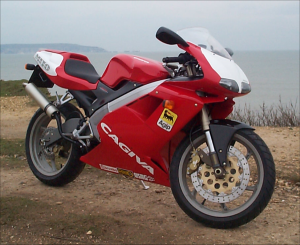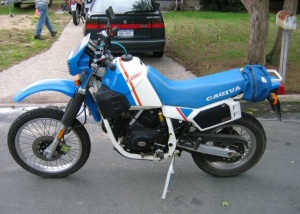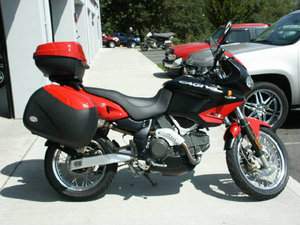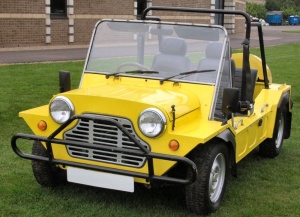Difference between revisions of "Cagiva"
m |
m |
||
| Line 41: | Line 41: | ||
* [http://www.cagiva.it Official site] | * [http://www.cagiva.it Official site] | ||
* [http://www.motorbikes.be/en/cagiva_motorcycles.aspx All Cagiva motorcycles since 1970 till now] | * [http://www.motorbikes.be/en/cagiva_motorcycles.aspx All Cagiva motorcycles since 1970 till now] | ||
| − | |||
| − | |||
| − | |||
Revision as of 09:46, 8 October 2007
Cagiva is an Italian motorcycle manufacturer. It was founded in 1950 by Giovanni Castiglioni in Varese, originally producing small metal components. It went into the motorcycle industry in 1978. The name is a portmanteau derived from the founder and the founding location, i.e. CAstiglioni GIovanni VArese. In 1999 for strategic purposes, the company got restructured. MV Agusta Motor become the main brand comprising Cagiva and Husqvarna. The company currently operates under the name MV Agusta Motor S.p.A. but remains under the ownership of Giovanni's sons, Claudio and Gianfranco Castiglioni.
History
In 1978 Cagiva entered the motorcycle business with two racing motorcycles riden by Gianfranco Bonera and Marco Lucchinelli.In the same year they bought a factory in Schiranna, Varese from AMF-Harley Davidson and went into motorcycle production. By 1979 the company reached an annual production of 40000 motorbikes with 8 models with two-stroke engines ranging from 125cc to 350cc.
In 1983 Cagiva obtained Ducati four stroke engines from 350cc to 1000cc and entered the big displacement market. They bought Ducati in 1985 but kept the Ducati name that was better recognized outside Italy. Ducati motorcycle production continued in Bologna, while the Varese-built Cagiva Ala Azzurra (sold under the name "Alazzurra") and Elefant were introduced, both featuring Ducati engines.
Cagiva continued with strategic buyouts of Moto Morini in 1985 and Husqvarna in 1987. In 1991 Cagiva also bought the tratemarks for the MV Agusta brand
In 1996 Ducati and the Moto Morini name were sold to Texas Pacific Group
In 1999 for strategic purposes, the company got restructured. MV Agusta Motor become the main brand comprising Cagiva and Husqvarna.
Racing
In the early 80's Cagiva began to manufacture dirt bikes and started a massive public relations program with the opening of their North American branch. They hired "Radical" Ron Turner to test and develop their bikes. They also had Duane Summers, a legend in the cross country pro circuit. This was when Johnny O'Mara was the 'fast' one on the 125's that year and Ron beat Johnny numerous times at local Southern California tracks. Cagiva motocross bikes were characterized by their fast powerful engines and innovative features, such as the MX line that had only one spring in the front forks with one fork controlling dampening and the other spring.
In the early 1990s the company began campaigning the Grand Prix motorcycle racing circuit with Randy Mamola as their rider. They would also have some technical assistance from Yamaha. In 1991 they signed former world champion Eddie Lawson to their team. Lawson would claim their first victory when he won the 1992 Hungarian Grand Prix. John Kocinski would also win a Grand Prix on a Cagiva (the C594) and finishing third in the 1994 world championship.
In 1990 and 1994 Italian rider Edi Orioli won the famed Dakar Rally on a Cagiva.
Mini Moke
Cagiva bought BMCs design for the Mini Moke, manufacturing them in Portugal using British built engines from 1990 until 1993. Intending to transfer production to the Bologna factory early in 1995, the tooling for the Moke was transferred to Italy late in 1993 - but production never restarted.
Current models

External links
External links


